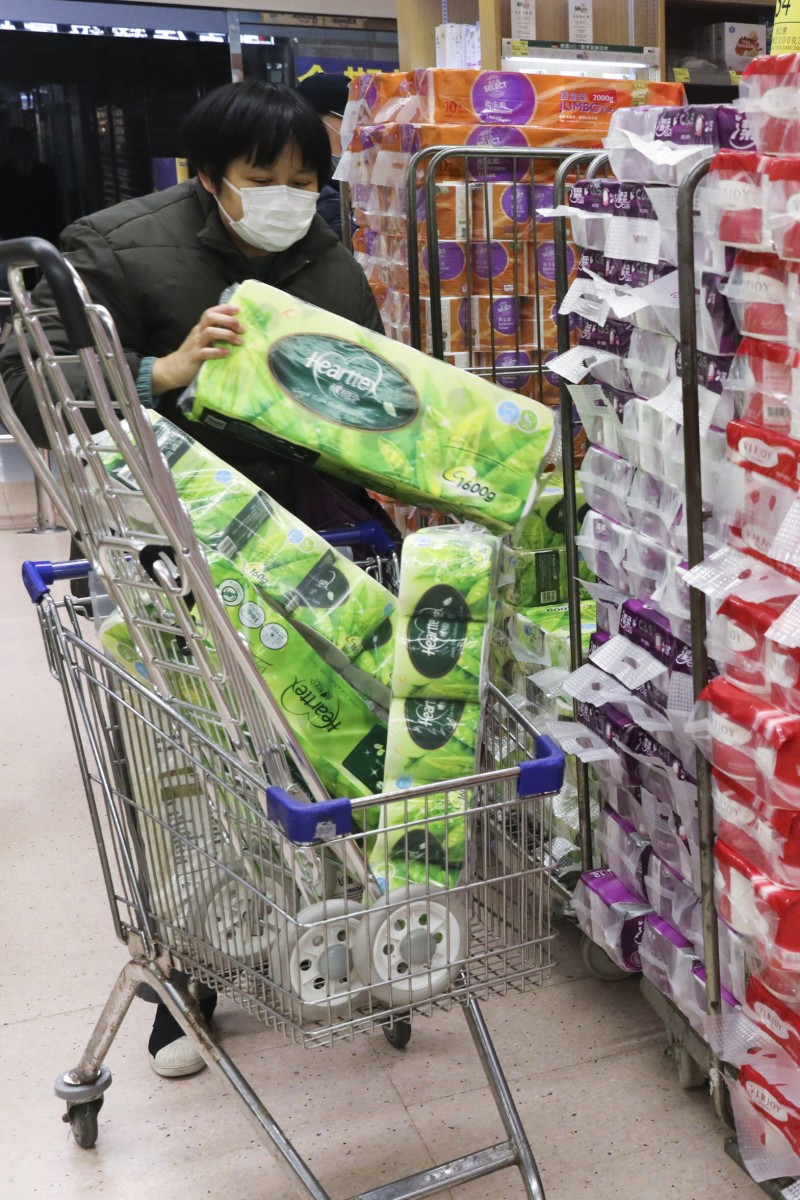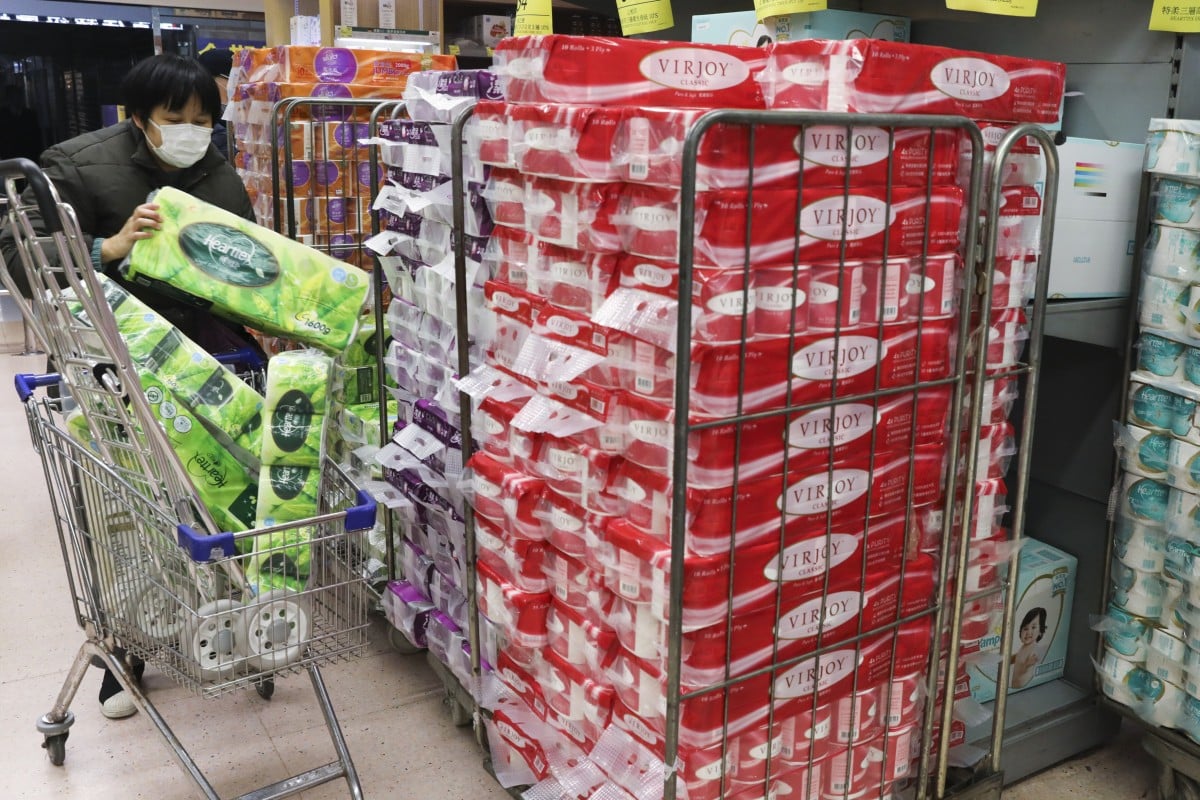
Study Buddy (Challenger): Forget panic buying – toilet paper in Hong Kong was once too expensive for most
- Study Buddy Challenger is for students who want to take their understanding to the next level with difficult vocabulary and questions that will test their inference skills
- Check your reading comprehension using the questions below or in the linked Kahoot! game
 Nowadays, manufactured toilet paper is the norm, and many in Hong Kong stockpile rolls during bouts of panic buying. Photo: Sam Tsang
Nowadays, manufactured toilet paper is the norm, and many in Hong Kong stockpile rolls during bouts of panic buying. Photo: Sam TsangContent provided by British Council
Read the following text, and answer questions 1-9 below:
[1] Last month saw intermittent bursts of panic buying in Hong Kong, with supermarket shelves stripped bare of essential items and associated supply chains struggling to cope. The fear that drives any panic is primal and no less real for its occasional irrationality.
[2] What do people stock up on when seemingly valid concerns about product shortages arise? At such stressful times, the immediate focus of many is reduced to their most basic requirements: lavatory habits, in particular, assume more importance than they might otherwise merit.
[3] During lockdown periods in various parts of the world in 2020 and 2021, fights regularly broke out in stores over the last few packets of toilet rolls. But what was used in Hong Kong for these purposes until relatively recent years? As in many places with widespread urban poverty, recycling was essential, right down to the last scrap of paper.
[4] Newspaper was the preferred material. Households would keep a supply of squares or triangles ready-cut to size. Another option was using thin, tissue-like papers that had been wrapped around apples, pears and other fruit to keep them fresh. Mostly surreptitiously scavenged from markets, cleanly folded ones were tied up in designated amounts and could be purchased cheaply from individual stallholders.
[5] Manufactured toilet paper was only used by the wealthy. Imported supplies were obtained from dispensaries; American brands were preferred. Flush sanitation also became more common by the 1930s in Hong Kong’s urban areas, as municipal water supplies became more reliable – in particular after major reservoir construction, such as at Shing Mun.
[6] However, most poorer households used bucket sanitation and chamber pots well into the 50s. These were put outside before bedtime, and the contents collected in the early hours by municipal night-soil collectors – known euphemistically as “The Night Perfume Women”. With this lavatory method, there were no concerns that scrunched-up newspapers or sodden fruit wrappings might clog up drains because there were no pipes to block to begin with.
[7] The widespread introduction of flush toilets in post-war residential buildings saw these earlier methods abandoned. Purpose-made, flushable toilet paper, designed to rapidly disintegrate soon after contact with rushing water, soon became universal; local mass production meant prices were affordable for all.
[8] Not everybody has to suffer from anticipated toilet paper shortage horrors – a few simple lifestyle changes can create welcome freedom from fear. An extended period spent living with Malay friends in northern Malaysia many years ago convinced me of the inherent superiority of their personal hygiene practices; these cleaner habits have been maintained ever afterwards, whenever immediate circumstances permit. Consequently, toilet paper in my household is reserved for guests, and this is also economical – a single slab of the stuff usually lasts for several months.
Source: South China Morning Post, March 21
Questions
Play a Kahoot! game about this story as a class or with your friends by clicking on the link here.
Or play on your own below to test your understanding:
1. What reason does the writer give for panic buying in paragraph 1?
A. basic instincts
B. herd mentality
C. need for a sense of control
D. misinformation and rumours
2. Find a phrase in paragraph 2 that means “to get a large quantity of something for later use”.
3. What does the phrase “these purposes” in paragraph 3 refer to?
4. What does paragraph 3 suggest about Hong Kong’s use of toilet paper in the past?
A. Toilet paper had to be rationed as people used to fight violently over it.
B. Hongkongers opted for more eco-friendly alternatives to toilet paper.
C. Most residents could not afford toilet paper and had to make do with other materials.
D. none of the above
5. What does the word “surreptitiously” in paragraph 4 imply about how the fruit wrappers were taken?
6. Which statement is true based on paragraphs 5 and 6?
A. Until the construction of public housing estates, the city’s working class had the same sanitation facilities as the wealthiest people.
B. While wealthy Hongkongers had flush toilets in their homes, most still used chamber pots since US-manufactured toilet paper was scarce.
C. Most low-income families in Hong Kong did not have flush toilets even in the middle of the 20th century.
D. all of the above
7. According to paragraph 6, what is an advantage of using chamber pots as compared to flush toilets?
8. Match the following phrases and expressions to the ideas they refer to. (4 marks)
9. Decide if the following statements are True, False or Not Given in the text. (4 marks)
(i) Infrastructure development in Hong Kong made flush toilets much more common after the 1950s.
(ii) After using the toilet, some people in Malaysia clean themselves with water instead of toilet paper.
(iii) Before toilet paper became affordable, most people in Hong Kong cleaned themselves with discarded cloth.
(iv) Many of “The Night Perfume Women” were shunned by others because of the nature of their job.
Answers
1. A
2. stock up on
3. cleaning up oneself after going to the toilet (accept other reasonable answers)
4. C
5. They were taken secretly. / They were taken without the stall owners’ knowledge. (any one)
6. C
7. With chamber pots, users do not have to worry about whether their toilet paper will clog the pipes.
8. (i) D; (ii) C; (iii) A; (iv) B
9. (i) T; (ii) NG; (iii) F; (iv) NG
